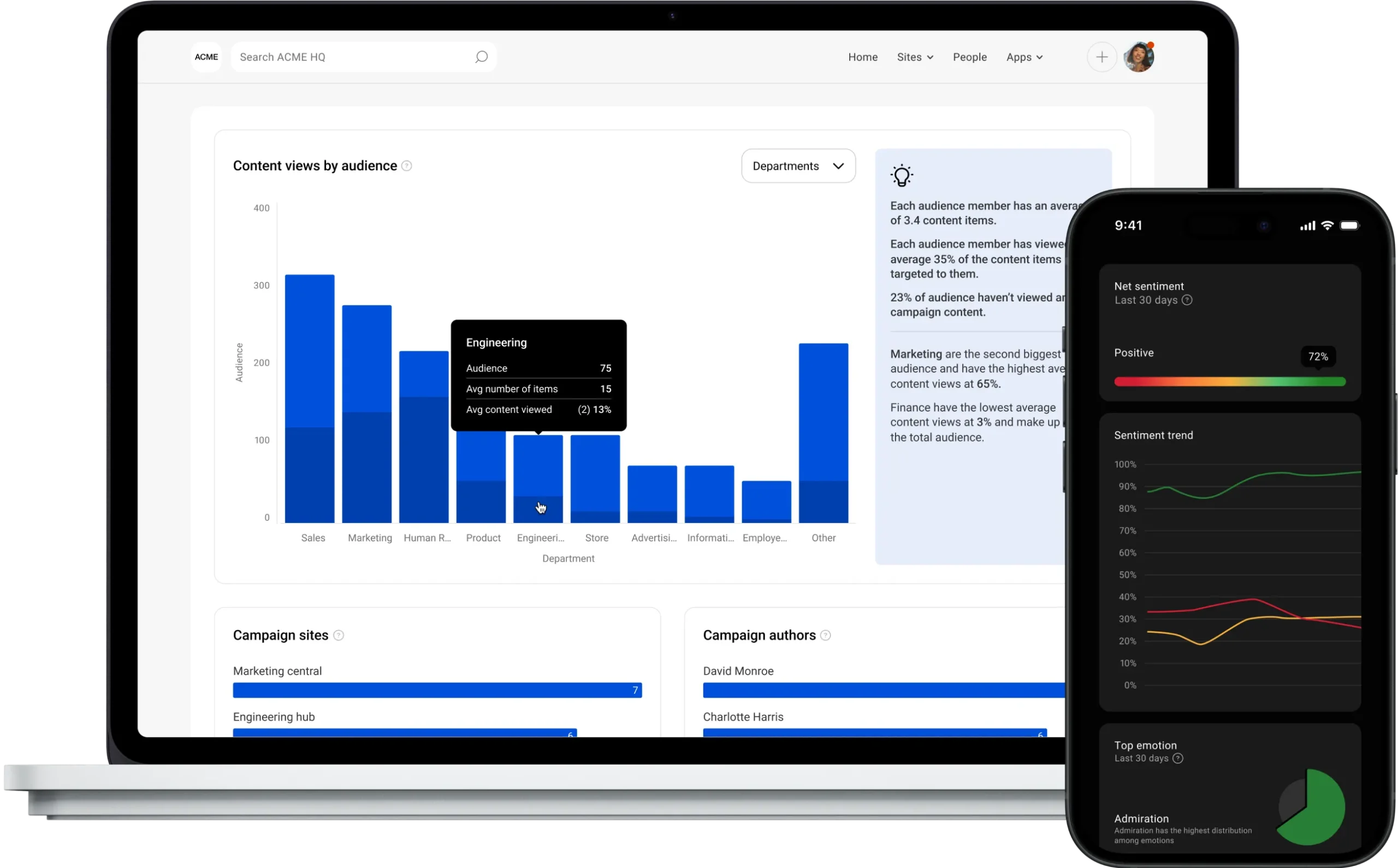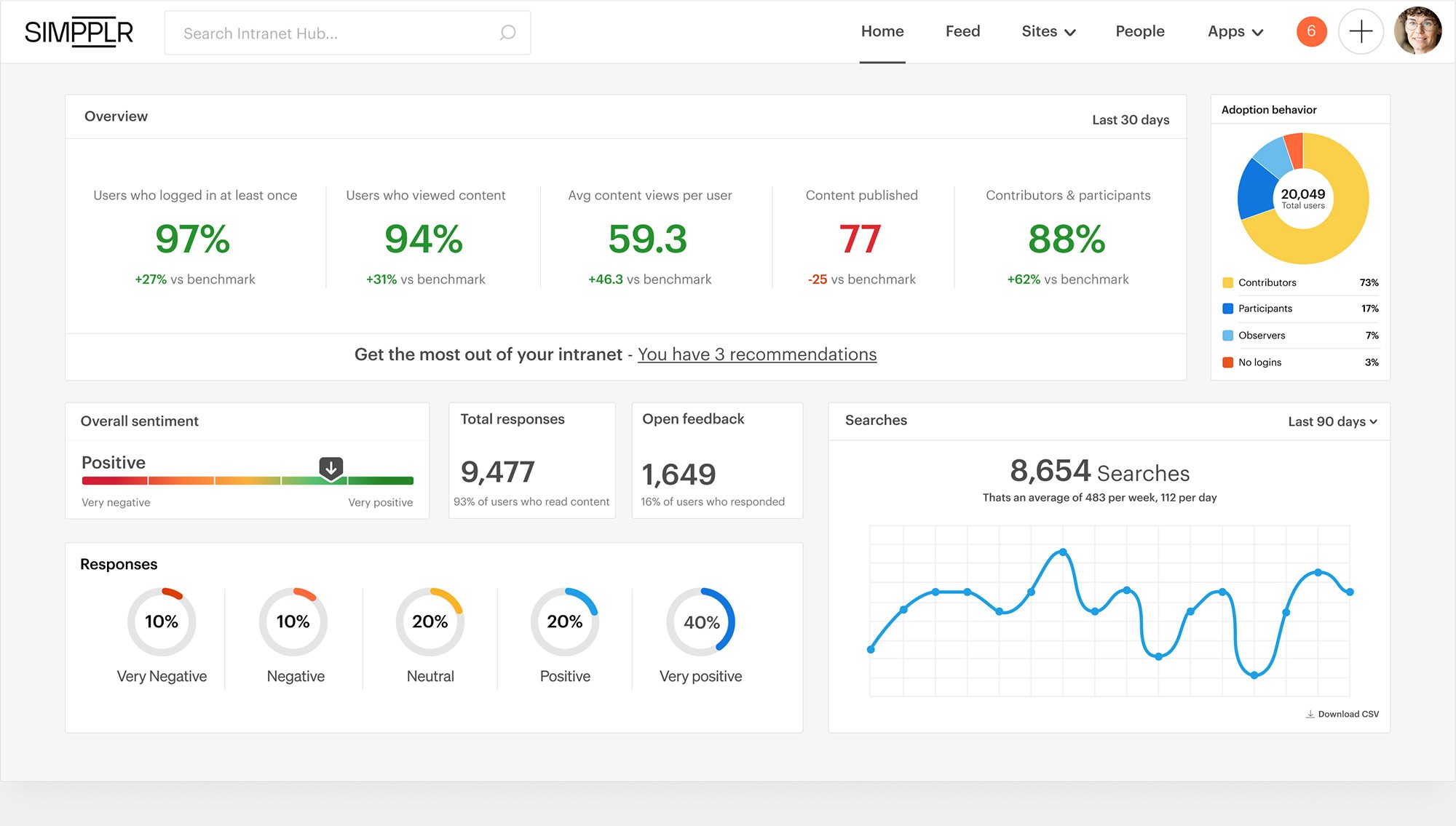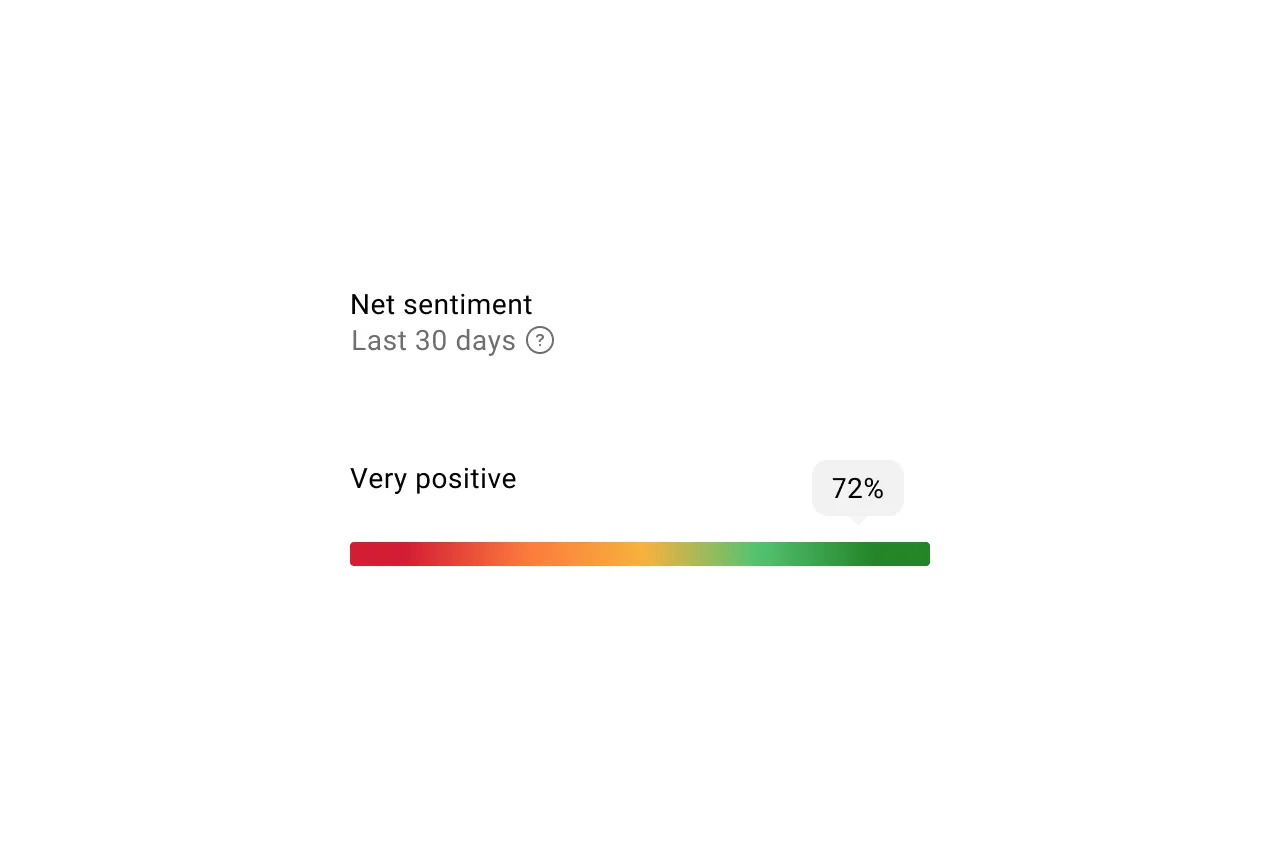Prescriptive analytics definition
Prescriptive analytics is a type of data analytics that not only ‘predicts’ what is likely to happen but also prescribes the best strategy to achieve desired outcomes.
Unlike descriptive analytics (which explains what happened), diagnostic analytics (why it happened), or predictive analytics (what might happen), prescriptive analytics goes a step further. It uses AI, machine learning, simulations, and optimization techniques to analyze historical and real-time data.
Modeling scenarios and evaluating constraints determine the optimal action to drive desired results, enabling organizations to make proactive, data-driven decisions. It is crucial in improving customer experiences, adapting to shifting market trends, and supporting organizational development.

Predictive vs prescriptive analytics
The terms predictive analytics and prescriptive analytics are frequently used interchangeably, but there is a difference.
Predictive analytics is a statistical method that ‘predicts’ future actions and improvements. It uses machine learning, data mining and statistical modeling techniques to identify patterns and predict what will happen next. For example, predictive analytics can help a company anticipate customer churn by analyzing past behavior or forecast sales based on seasonal trends. However, it stops at prediction — it tells you what might happen but not what you should do about it.
Prescriptive analytics, on the other hand, goes a step further. While predictive analytics answers, “What is likely to happen?”, prescriptive analytics answers, “What should we do about it?” It not only predicts future events but also recommends specific actions to achieve desired outcomes or mitigate risks with the use of AI. It allows listening to the organization’s heartbeat by surfacing employee sentiment, feedback, and behavioral signals. From this data, leadership can develop the best action plan.
While predictive analytics helps organizations anticipate what might happen, prescriptive analytics guides them in proactively responding for optimal results.
Other forms of data analytics
- Descriptive analytics: Focuses on summarizing historical data to understand what has happened in the past. It provides a clear snapshot of past performance by tracking key metrics such as sales growth, employee turnover rates, or engagement levels. This type of analysis is commonly used in dashboards and reports to monitor trends, measure progress, and guide strategic reviews.
- Diagnostic analytics: Goes a step further by examining the reasons behind past outcomes. It answers the question, “Why did this happen?” through drill-down, data discovery, and correlation analysis techniques. For instance, it can reveal the root causes behind a sudden drop in employee engagement or a spike in turnover, empowering organizations to take targeted action and resolve underlying issues more effectively.
Importance of AI-driven analytics
Traditional analytics tools have served a purpose, but have fallen flat. They don’t scale easily to meet growing demands and can’t provide the real-time insights needed to keep up with innovative competitors in fast-paced markets.
AI and machine learning are transforming the analytics field by offering a level of speed, scale, and granularity that isn’t humanly possible. Leading the charge is Simpplr, an AI-powered intranet platform purpose-built to evolve alongside technological innovation. By thoughtfully embedding AI into every layer of its experience, Simpplr transforms raw data into intelligent, actionable insight tailored to each user and team.
Simpplr stands out from the competition by integrating AI into augmented intelligence, empowering users to make informed decisions and take appropriate actions actively — putting the power of AI directly in their hands.
Powered with integrated AI-powered analytics, it learns employee preferences and uncovers hidden employee sentiments and emotions. Enables people leaders to understand the insights provided and prescribe recommendations for them to take action, freeing bandwidth for more strategic work while facilitating better decision-making and an enhanced employee experience
Providing the best data insights with actionable intelligence, HR and IC teams drive adoption, engagement, and governance seamlessly.

Furthermore, using Simpplr prescriptive analytics also empowers you to:
- Surface real-time insights: Get a clear snapshot of employee engagement using AI-backed data science that combines usage data and sentiment analysis, behavior signals, and feedback.
- Know what’s working and what’s not: Understand the content, channels, and tactics that drive intranet adoption so you know where and how to improve the employee experience.
- Get truly native analytics: Take advantage of built-in analytics that harness meaningful intelligence without custom builds or third-party applications.
Feel free to watch this video at 1.5x speed!
How does prescriptive analytics work?
Prescriptive analytics works through a series of interconnected steps that transform raw data into actionable strategies. Here’s a breakdown of its core mechanics:
- Data collection: First, relevant data is gathered from various sources like customer interactions, sales, and operational activities. This data can be both structured and unstructured.
- Data processing: Next, the data is cleaned and organized to ensure it’s accurate, consistent, and usable for analysis.
- Prescriptive modeling:
- Optimization: Uses AI and algorithms to evaluate trade-offs between constraints (e.g., budget limits) and objectives.
- Simulation: Test decision impacts under various scenarios (e.g., supply chain disruptions)
- Recommendation generation: Produces data-driven actions (e.g., “Increase inventory by 20% in Q3”) by integrating predictive insights with business rules and domain expertise. Recommendations are tailored to organizational goals, such as profit maximization or risk mitigation.
- Deployment: Once evaluated, the models are deployed into operational systems or apps to deliver real-time predictions and actionable recommendations. This often involves integrating them into existing software, APIs, dashboards, or an intranet, allowing seamless access and automating decision-making processes. Automation streamlines the process, making insights easier to access and act on.
- Monitoring and continuous learning: Refines models using feedback loops, where outcomes of implemented decisions are analyzed to improve future recommendations. Machine learning enables adaptation to new data and changing environments.
Benefits of prescriptive analytics
Prescriptive analytics reshapes decision-making by turning complex data into clear, actionable strategies. Going beyond insights to recommend the next steps empowers organizations to make smarter choices, optimize outcomes, and unlock measurable impact across operations.
Sets smarter goals with built-in benchmarks
Benchmarking combined with prescriptive analytics helps set clearer, more actionable goals by comparing your performance against industry standards. With built-in benchmarks, you can see exactly where your organization stands and identify the best path forward. Prescriptive analytics goes a step further by offering data-driven recommendations on how to achieve those goals, ensuring that every target is not only achievable but also aligned with what’s proven to work in your industry.

Better decision making
Organizations relying on outdated or reactive methods often struggle with inefficiencies and missed opportunities, leading to suboptimal outcomes. Prescriptive analytics leverages AI and real-time insights to evaluate scenarios, constraints, and recommend the best course of action. This empowers teams to align decisions with strategic goals — such as cost reduction or revenue growth — while minimizing uncertainty. The result is faster, more precise choices that enhance operational efficiency and long-term competitiveness.
Understands employee sentiment and behaviors
According to Gartner HR Practice, nearly 70% of employees feel disengaged and lack a meaningful connection to their work. This indicates a pressing need for organizations to better understand how employees feel and what drives their behavior. Prescriptive analytics, along with an employee listening tool, analyzes how employees across geographies and departments engage and gathers data from surveys, sentiment checks, and everyday interactions like comments, to gain a clearer, holistic view of employee sentiment.

Improved customer experience
Businesses can create more personalized customer experiences and targeted solutions by understanding behaviors and predicting needs. Prescriptive analytics helps brands segment their audience more effectively and deliver smart, data-driven recommendations — often before the customer even asks for them. This leads to increased customer satisfaction, higher conversion rates, and stronger brand loyalty, turning satisfied customers into enthusiastic advocates.
Challenges of prescriptive analytics
Prescriptive analytics can offer powerful insights, but it has its own limitations.
Interpretability of results
Prescriptive analytics shows high dependence on complex machine learning models that work like a “black box”— give answers, but don’t clearly show how things were done or what factors influenced the recommendations. This lack of transparency makes it hard for decision-makers to fully trust or act on the recommendations, leading to compliance or ethical concerns. That’s why making these models more understandable is crucial and ensuring that the insights they deliver can be clearly explained to stakeholders.
Data quality and integration
The accuracy of prescriptive analytics depends on clean, consistent data. Poor data quality, whether from incomplete records, errors in data entry, or inconsistent formats, can undermine the effectiveness of the models. Additionally, organizations often store data in different systems, making integration difficult. Consider a smart intranet platform with seamless integration and APIs that connect systems, streamline workflows, and provide personalized single-point access to employees, eliminating the cost of additional point solutions.

Simpplr APIs sync with other databases, like SharePoint, DropBox, Google Drive, Box, Office 365, ServiceNow, and Confluence to ensure a seamless integration experience.
Examples of prescriptive analytics
Prescriptive analytics is not just about prediction and optimization; it actively recommends specific actions that lead to innovation. By continuously learning from data, organizations across industries are not just adopting it — they’re scaling its use to solve complex challenges, streamline operations, and create more impactful strategies.
Prescriptive analytics in healthcare
Frontline industries, including the healthcare industry, is always on the move. Hospitals operate in high-stakes environments where timely communication and real-time data given to patient-facing employees can make all the difference. This is especially true during critical moments such as patient triage, resource shortages, or public health crises.
Prescriptive analytics addresses these challenges by leveraging AI, machine learning, and optimization algorithms to analyze vast datasets — from electronic health records to wearable devices — and recommend precise actions. For instance, it can predict patient deterioration, optimize staff schedules during peak demand, or allocate medical supplies efficiently to prevent shortages. By simulating scenarios (e.g., disease outbreaks or equipment failures), prescriptive models enable healthcare providers to proactively mitigate risks, reduce readmissions, and personalize treatment plans.
Related: Bridging the digital divide: how to address unequal access to company news and resources
Prescriptive analytics in sales
Prescriptive analytics gives sales teams a powerful edge by turning data into clear, actionable recommendations. Instead of just showing what happened (like lagging sales) or what might happen (like a projected dip in revenue), it goes one step further to suggest exactly what to do next.
It helps the sales team:
- Maximizing first-contact success rates
- Identifying where customers are in the purchase path and how to best move them through the purchase funnel with precise offers
- Enabling sales teams to be more effective at their job with federated search capabilities that capture every point of contact
- Pinpointing employees who are taking the lead, as well as identifying those who need additional training to enhance their confidence and amplify sales expertise
- Identifying where sales reps are losing their customers in the customer journey and identifying undiscovered pain points to recover lost leads and attract new ones
By continuously learning from buyer interactions, market trends, and past sales data, prescriptive analytics helps teams close more deals, improve customer relationships, and hit targets faster — with less guesswork.
Get a live demo to see how Simpplr’s prescriptive analytics can help you make smarter, data-driven decisions to drive employee engagement and productivity.

Watch a 5-minute demo
See how the Simpplr employee experience platform connects, engages and empowers your workforce.
- #1 Leader in the Gartner Magic Quadrant™
- 90%+ Employee adoption rate







